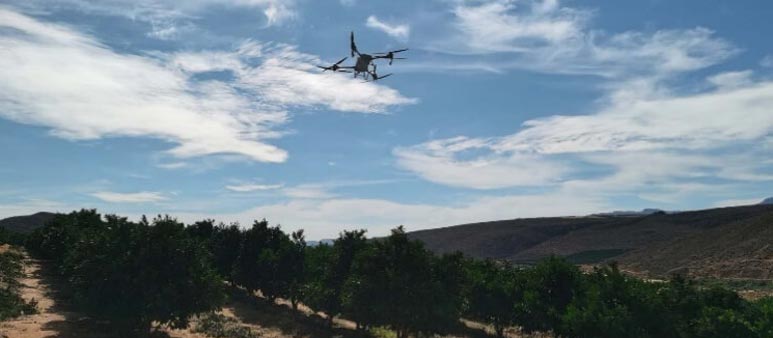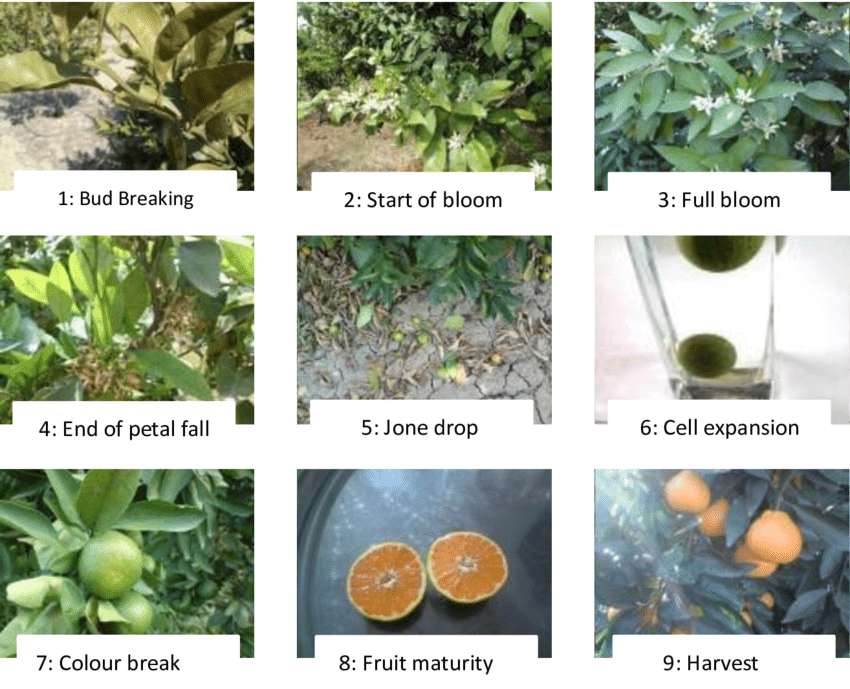1. Higher Efficiency
In South Africa, fruit fly bait is sprayed every 1-2 weeks during the fruiting season. While frequent spraying effectively protects fruits from potential damage, it demands significant labor and operational efficiency. Traditionally, manual spraying achieves about 2-3 hectares per day per person, and motorbike spraying covers 40-50 hectares per day.
One of the primary advantages of using DJI Agriculture drones is their remarkable efficiency. The DJI Agras T40 and T50 drones can cover an impressive 90-120 hectares per day. This efficiency allows farmers to complete their spraying tasks quickly, ensuring that fruit flies are effectively controlled during peak seasons.
| Items | Agras T40/T50 | Motor bike | Manual spraying |
|---|---|---|---|
| Efficiency | 120 ha/day | 50 ha/day | 2 ha/day |
| Drone efficiency increased | — | +140% | +590% |
| Chemical rate | 1 L/ha | 1 L/ha | 1 L/ha |
| Water Volume | 2-4 L/ha | 20 L/ha | Inaccurate rate |
2. Good Adaptability to Terrain
Orchards often feature challenging terrains, including steep slopes that are difficult for ground sprayers to access. In contrast, the DJI Agras drones excels in such environments, navigating terrain with slopes up to 50°, making it an adaptable spraying tool for all types of landscapes. Additionally, the drone maintains a consistent flying speed even over rugged terrain, ensuring uniform fly bait coverage across the canopy. This is in stark contrast to ground sprayers, whose speed and coverage are highly dependent on the flatness of the terrain.

3. Timely Spraying After Rain
Rain can pose a significant challenge for traditional spraying methods. After rainfall, motorbike sprayers must wait for the land to dry to avoid getting stuck in the mud. This is particularly challenging on orchard terrains with slopes and varying elevations, leading to delays in the immediate control of fruit flies. In contrast, agricultural drones, as non-contact spraying tools, can operate anytime, minimizing potential losses from delayed spraying.
Drone Application Opportunities in Fruit Fly Baiting
In South Africa, drones are typically used to spray fruit fly bait every 1-2 weeks during the fruiting season. Using citrus as an example, the bait spraying process begins at Jone Drop and continues until Fruit Maturity, spanning a total of 8 months.

Best Practices For Drone Fruit Fly Baiting
Product Model and Parameter Recommendation
To achieve the best results, it is essential to use the recommended product package. For DJI Agras drones, this includes specific bait and water mixtures tailored to the drone’s capabilities.
To achieve longer duration and better effect, it is recommended to use large droplet sizes. With T40 and T50, it is recommended to set the droplet size to the maximum 500 μm. Additionally, increase the spraying frequency to once a week to account for faster evaporation. Another option is to use custom-modified nozzles which supports larger droplet size up to 1-6 mm[1].
For route spacing, set it to 12 meters when using a 500 μm droplet size, or larger route spacing when using larger droplet size. Blanket spraying coverage is unnecessary as the chemical acts as a bait, attracting flies with its protein substance smell.
On the day of spraying, ensure the temperature is ≤30° C and the wind speed is ≤15 km/h to minimize evaporation and reduce drift risks.
| T40/T50 | |
|---|---|
| Application Rate | 2-4 L/ha (1 L bait, 1-3 L water per hectare) |
| Droplet Size | 500 μm |
| Flight Speed | 25 – 36 km/h |
| Route Spacing | 12 m |
| Height Above the Crop | 8 m |
| Spraying Frequency | 1 time every week |
Following these parameters ensures optimal coverage and minimizes evaporation and drift risks.
Conclusion
In the struggle against fruit flies, DJI Agriculture drones offer a cutting-edge solution that addresses the limitations of traditional methods. With their efficiency, adaptability, and timely operation, these drones are revolutionizing pest control in orchards worldwide. By adopting these advanced technologies, sustainable farming advocates, agricultural innovators, farm owners, pest control experts, modern farmers, and orchard owners can achieve better results while promoting sustainable agriculture practices.

Request for a Quote
Please provide a quote for drone solutions including pricing, specifications, and delivery options.





